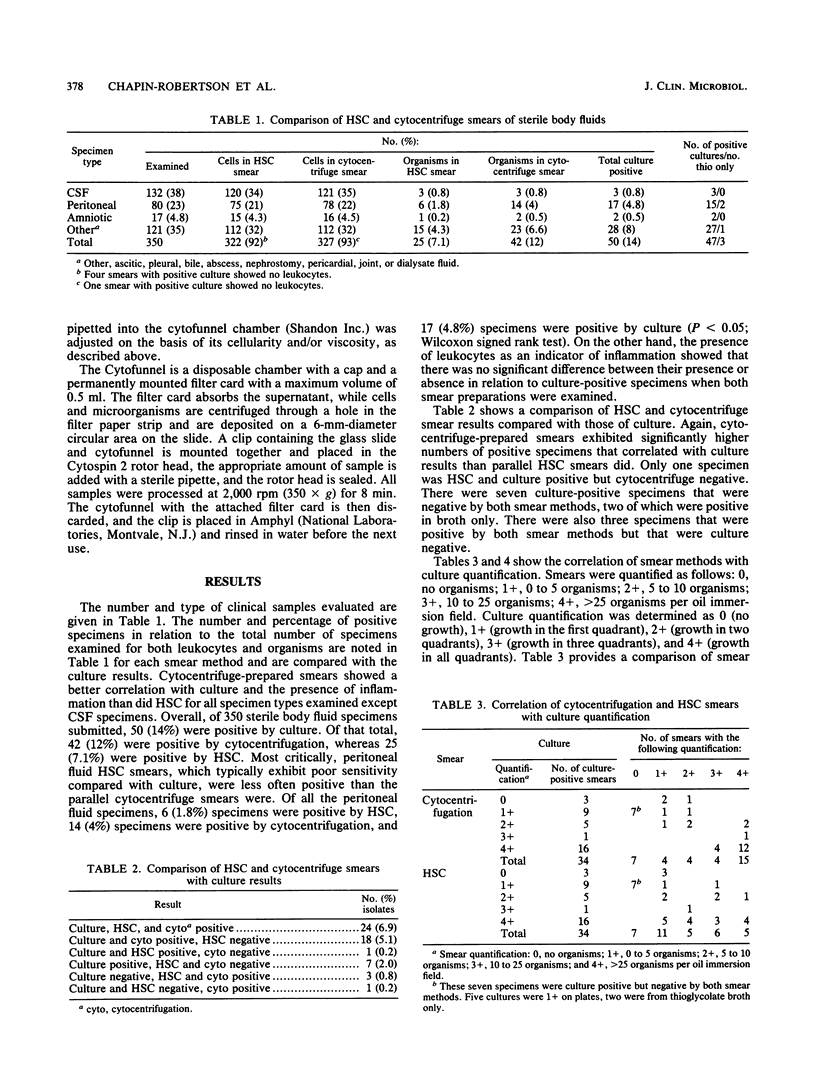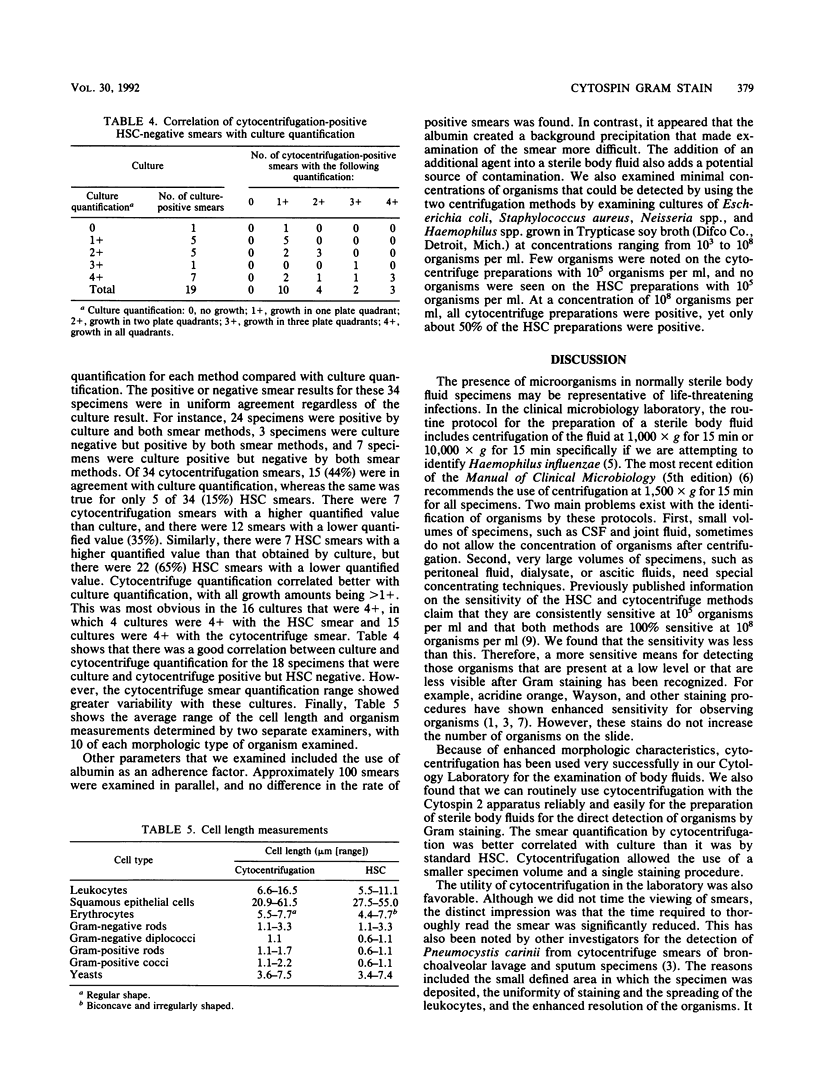Abstract
The smear of a clinical specimen provides essential laboratory information that is used to make therapeutic decisions. For this study, smears were made by centrifugation in a Beckman Microfuge 11 (Beckman Instruments, Palo Alto, Calif.) and in parallel by using a Cytospin 2 apparatus (Shandon Inc., Pittsburgh, Pa.). Of 350 consecutive body fluid specimens examined, 50 (14.0%) grew bacteria. Both methods were culture and smear positive for 24 (6.9%) specimens; 18 (5.1%) specimens were cytocentrifuge smear positive, culture positive, and high-speed centrifugation (HSC) negative; 3 (0.8%) were culture negative and positive by both smear methods; and 1 (0.2%) was HSC smear positive, culture positive, and cytocentrifuge negative. Seven (2.0%) specimens were culture positive and negative by both smear methods. Clinically, cytocentrifuge preparations showed greater sensitivity for culture-positive specimens and a closer correlation with the CFU per milliliter than HSC did, resulting in a greater ability to treat patients with specific therapies. In addition, analysts needed to examine only a 6-mm-diameter area on the slide, cells and microbes were somewhat larger and more regular in appearance, and smears stained more uniformly. Because of the increased clinical and laboratory utility of the cytocentrifuge, its use is recommended in clinical microbiology laboratories for all sterile body fluid specimens.
Full text
PDF



Selected References
These references are in PubMed. This may not be the complete list of references from this article.
- Choi H. S., Anderson P. J. Diagnostic cytology of cerebrospinal fluid by the cytocentrifuge method. Am J Clin Pathol. 1979 Dec;72(6):931–943. doi: 10.1093/ajcp/72.6.931. [DOI] [PubMed] [Google Scholar]
- Daly J. A., Gooch W. M., 3rd, Matsen J. M. Evaluation of the Wayson variation of a methylene blue staining procedure for the detection of microorganisms in cerebrospinal fluid. J Clin Microbiol. 1985 Jun;21(6):919–921. doi: 10.1128/jcm.21.6.919-921.1985. [DOI] [PMC free article] [PubMed] [Google Scholar]
- Drewinko B., Sullivan M. P., Martin T. Use of the cytocentrifuge in the diagnosis of meningeal leukemia. Cancer. 1973 Jun;31(6):1331–1336. doi: 10.1002/1097-0142(197306)31:6<1331::aid-cncr2820310605>3.0.co;2-g. [DOI] [PubMed] [Google Scholar]
- Gill V. J., Nelson N. A., Stock F., Evans G. Optimal use of the cytocentrifuge for recovery and diagnosis of Pneumocystis carinii in bronchoalveolar lavage and sputum specimens. J Clin Microbiol. 1988 Sep;26(9):1641–1644. doi: 10.1128/jcm.26.9.1641-1644.1988. [DOI] [PMC free article] [PubMed] [Google Scholar]
- Lauer B. A., Reller L. B., Mirrett S. Comparison of acridine orange and Gram stains for detection of microorganisms in cerebrospinal fluid and other clinical specimens. J Clin Microbiol. 1981 Aug;14(2):201–205. doi: 10.1128/jcm.14.2.201-205.1981. [DOI] [PMC free article] [PubMed] [Google Scholar]
- Martinazzi M. A slide centrifugation technic for concentrating blood leukocytes and nucleated cells from bone marrow blood. Am J Clin Pathol. 1971 Dec;56(6):719–722. doi: 10.1093/ajcp/56.6.719. [DOI] [PubMed] [Google Scholar]
- Shanholtzer C. J., Schaper P. J., Peterson L. R. Concentrated gram stain smears prepared with a cytospin centrifuge. J Clin Microbiol. 1982 Dec;16(6):1052–1056. doi: 10.1128/jcm.16.6.1052-1056.1982. [DOI] [PMC free article] [PubMed] [Google Scholar]


